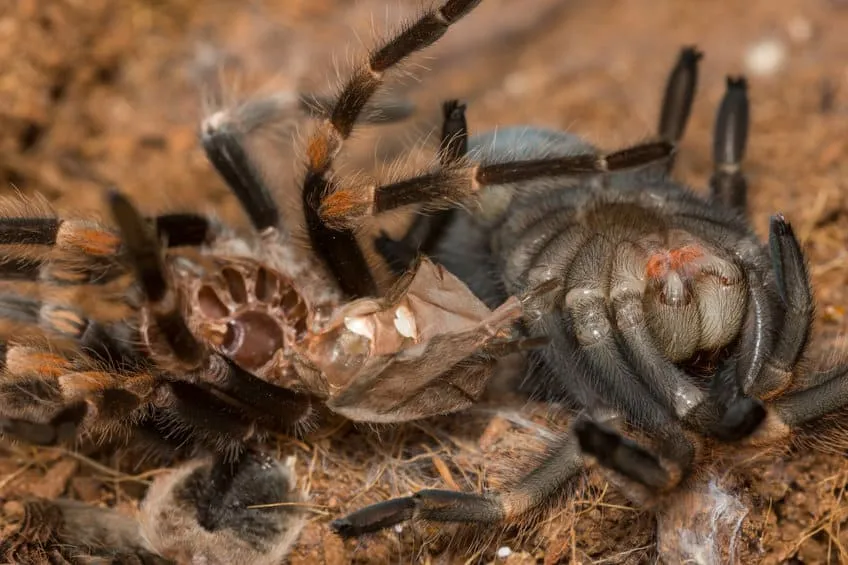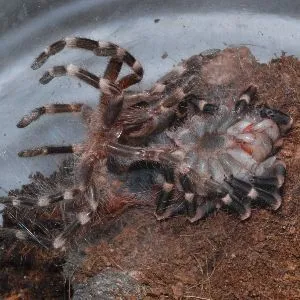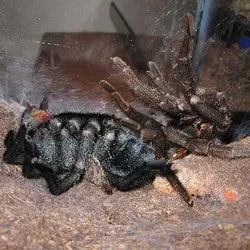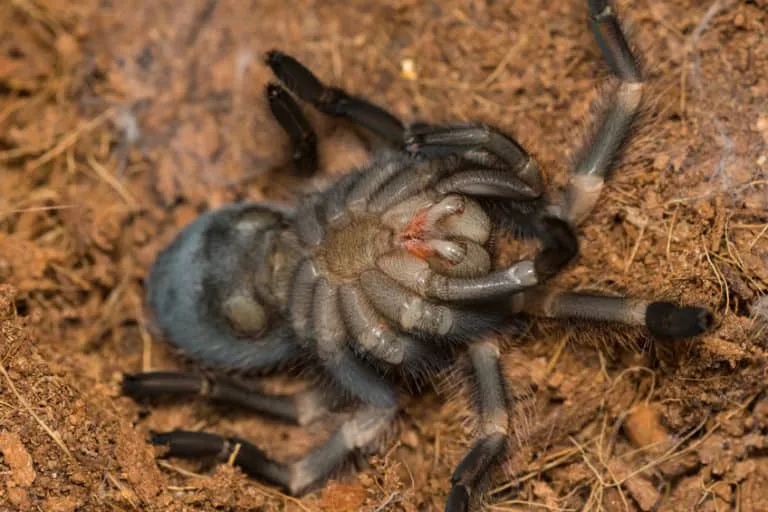Understanding Tarantula Molting
Tarantula molting is a fascinating and vital process for these incredible creatures. It’s essentially how they grow, shedding their old exoskeleton to reveal a new, larger one beneath. This process isn’t just about size; it’s also a crucial time for tarantulas to regenerate lost limbs, replace internal linings, and get rid of parasites. The frequency of molting varies depending on the tarantula’s age, species, and environmental conditions. Spiderlings, or juvenile tarantulas, molt quite frequently, sometimes every few months, while adult tarantulas molt less often, perhaps once a year or even less. Understanding the molting process is the first step in providing proper care, and temperature plays a key role in ensuring a successful molt.
The Importance of Temperature for Tarantula Molting
Temperature is a critical environmental factor that directly influences a tarantula’s metabolism and, consequently, its molting process. A tarantula’s body temperature is dependent on the ambient temperature of its surroundings, as they are ectothermic, meaning they rely on external sources to regulate their body heat. When the temperature is within the ideal range, it facilitates the enzymatic reactions required for the molting process. This includes the breakdown of the old exoskeleton and the formation of the new one. Incorrect temperatures, either too high or too low, can significantly disrupt these processes, leading to molting problems or even death. Therefore, providing and maintaining the correct temperature is paramount to your tarantula’s health and well-being.
Optimal Temperature Range for Tarantula Molting

The ideal temperature range for tarantula molting typically falls between 75 to 85 degrees Fahrenheit (24 to 29 degrees Celsius). This range is a general guideline, and the precise temperature preferences can vary slightly depending on the tarantula species. Generally, warmer temperatures within this range will speed up the metabolic processes, potentially shortening the time it takes for a molt. However, it’s crucial to avoid temperatures that are too high, as this can stress the tarantula and lead to dehydration. Similarly, temperatures below the ideal range can slow down the metabolic rate, making the molting process more difficult and potentially leading to a failed molt. Always research the specific temperature requirements for your tarantula species to ensure optimal conditions.
Factors Affecting Tarantula Molting Temperature
Several factors can influence the temperature within a tarantula’s enclosure, thereby impacting the molting process. Understanding these factors allows for better control and optimization of the environment. The enclosure’s location in your home can affect the temperature, with areas near windows or vents experiencing more significant fluctuations. The type of heating used, whether it’s a heat mat, a ceramic heat emitter, or ambient room heating, directly impacts the temperature gradient within the enclosure. The size of the enclosure relative to the heating source also plays a role, as a smaller enclosure will heat up more quickly than a larger one. Furthermore, the material of the enclosure (glass, plastic, etc.) can affect heat retention. Careful consideration of these factors is essential to provide a stable and appropriate temperature for your tarantula.
Humidity Levels and Their Impact
Humidity and temperature are interconnected and both are key to successful molting. While temperature provides the necessary environment for the metabolic processes, humidity helps the tarantula during the physical act of molting. High humidity levels soften the old exoskeleton, making it easier for the tarantula to shed. Low humidity can cause the old exoskeleton to become brittle and difficult to remove, leading to a failed molt. The appropriate humidity levels vary by species, but generally, a range of 60% to 80% is suitable for many common tarantula species. Maintaining the right humidity often involves regular misting, the use of a water dish, and the correct substrate. Monitoring both temperature and humidity with reliable tools is crucial.
Ventilation and Air Circulation

While maintaining the correct temperature and humidity is critical, it’s equally important to ensure adequate ventilation. Proper air circulation helps to prevent the buildup of stagnant air, which can lead to mold and bacterial growth, which can be very harmful to tarantulas, especially during the molting phase. Good ventilation helps to regulate humidity and temperature, and it also prevents the enclosure from becoming too humid, which can promote the growth of harmful pathogens. A well-ventilated enclosure typically has vents on the sides, top, or a combination of both. However, it’s essential to balance ventilation with humidity retention; excessive ventilation can lead to dehydration, which is detrimental to molting. The design of the enclosure and the placement of vents significantly affect air circulation.
Substrate and Enclosure Type
The type of substrate and enclosure you choose can also affect the temperature and humidity levels within the enclosure, therefore impacting the tarantula molting temperature. Substrates like coconut fiber or peat moss retain moisture well, contributing to higher humidity levels, while also helping to maintain a more stable temperature. The depth of the substrate is also important; deeper substrates allow tarantulas to burrow, which helps them regulate their body temperature and find a comfortable spot for molting. The material of the enclosure (glass, plastic, etc.) influences heat retention and insulation. Glass enclosures are generally better at retaining heat than plastic ones, but they may also require more careful temperature regulation to prevent overheating. Choosing the right substrate and enclosure is an essential step in creating the perfect environment for your tarantula.
Species-Specific Temperature Needs
It’s extremely important to remember that different tarantula species have different temperature requirements. Tropical species, for instance, generally prefer warmer temperatures and higher humidity than species from more temperate climates. Researching your specific tarantula species’ native habitat is crucial to understanding its ideal temperature range. This information will help you determine the most appropriate temperature to maintain within the enclosure. Some species also have different temperature requirements at different life stages, so it’s important to monitor your tarantula’s development and adjust the temperature accordingly. Providing the correct temperature, tailored to your species’ specific needs, significantly increases the chances of a successful molt.
Monitoring and Maintaining Temperature

Consistent monitoring and maintenance are critical to providing a stable temperature environment for your tarantula. Regular checks with a reliable thermometer are essential to ensure that the temperature remains within the ideal range. Record the temperature regularly to track fluctuations and identify any potential issues. Observe your tarantula’s behavior; changes in activity level or feeding habits can sometimes indicate that the temperature is not optimal. Make adjustments to your heating system as needed to maintain the desired temperature. This might involve adjusting the thermostat on your heat mat, repositioning your heat lamp, or improving insulation. Proper monitoring and diligent maintenance are key to ensuring a successful molt and the overall health of your tarantula.
Tools for Temperature Monitoring
Several tools are available to help you accurately monitor the temperature within your tarantula’s enclosure. A digital thermometer is the most common and reliable tool. Place the thermometer inside the enclosure, preferably in different locations to measure the temperature gradient. Digital thermometers often come with probes that can be placed in the substrate or suspended in the air. You can also use a temperature gun for spot-checking the temperature in various areas of the enclosure. For more advanced monitoring, consider a temperature and humidity gauge, which provides a combined reading. Ensure that any equipment you use is accurate and properly calibrated. Regular checks and calibration will guarantee accurate readings, helping you maintain the correct temperature and humidity for your tarantula.
Methods for Temperature Regulation
Various methods can be used to regulate the temperature within your tarantula’s enclosure. Heat mats are a popular choice for providing gentle, consistent heat from underneath the enclosure. They should be used with a thermostat to prevent overheating. Ceramic heat emitters are another option, providing radiant heat without emitting light, which can be useful for nocturnal species. If you are using a heat lamp, ensure it is positioned correctly and that the light does not disturb the tarantula. The enclosure’s location can also influence the temperature; avoid placing it near direct sunlight or drafts. Adjust the heating methods and the enclosure’s placement to maintain the desired temperature range. Regularly check the temperature and adjust as needed to ensure your tarantula’s well-being.
Troubleshooting Molting Problems Related to Temperature

Problems with the molting process are sometimes related to temperature fluctuations. If your tarantula experiences difficulties molting, such as a failed molt or incomplete shedding, the temperature may be a contributing factor. A failed molt can occur if the temperature is too low, which can slow down the metabolic processes needed for the molt. Incomplete shedding can occur if the temperature is too low and the old exoskeleton becomes too hard, or if humidity levels are not adequate. Check the temperature and make sure it’s within the correct range for the species. Assess the enclosure’s humidity levels as well. If the temperature and humidity are optimized, and problems persist, other factors like nutrition, age, or underlying health issues may be playing a role. Consulting with a veterinarian who specializes in exotic animals can provide further insight if issues continue.
In conclusion, understanding the importance of tarantula molting temperature and the factors that influence it is crucial for responsible tarantula ownership. By carefully monitoring and regulating the temperature within your tarantula’s enclosure, you can ensure a successful molt and contribute to the overall health and well-being of your pet. Remember to always research the specific temperature and humidity requirements for your tarantula species, and consistently monitor and adjust the environment to meet its needs. This diligence will increase the likelihood of a healthy and thriving tarantula.
